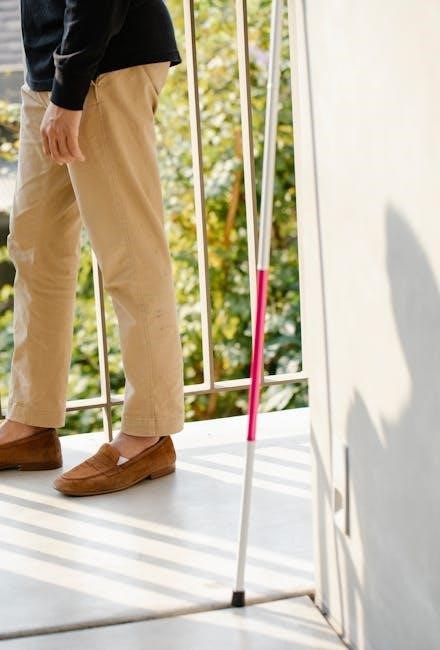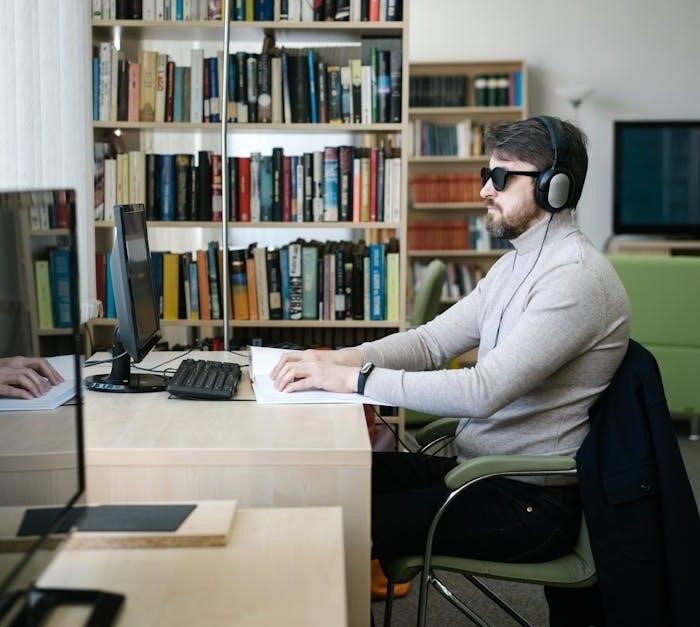Vienna, the capital of Austria, captivates visitors with its grand palaces, opera houses, and rich history. Known as the City of Music, it blends tradition with modern charm.
1.1. Overview of Vienna’s Historical Significance
Vienna, once the capital of the Habsburg Empire, is steeped in history and cultural heritage. Its strategic location in Central Europe made it a crossroads of trade, politics, and art. The city was a center of power for centuries, shaping European history. Vienna’s architectural splendor, from baroque palaces to Gothic cathedrals, reflects its rich past. It is also renowned for its contributions to classical music, with composers like Mozart and Beethoven leaving lasting legacies. Today, Vienna stands as a living museum, blending its historical significance with modern vibrancy, making it a timeless destination for travelers.
1.2. Why Vienna is a Must-Visit City in Europe
Vienna captivates visitors with its unique blend of history, culture, and modern charm. As a UNESCO World Heritage site, the city offers iconic landmarks like Schönbrunn Palace and St. Stephen’s Cathedral. Its vibrant arts scene, world-class museums, and renowned opera houses provide endless cultural experiences. The city’s coffee culture, with its historic cafés, is a must-try. Additionally, Vienna’s efficient public transport and bike-friendly streets make exploration easy. Whether strolling through imperial gardens or enjoying a classical music performance, Vienna promises unforgettable experiences for every kind of traveler.
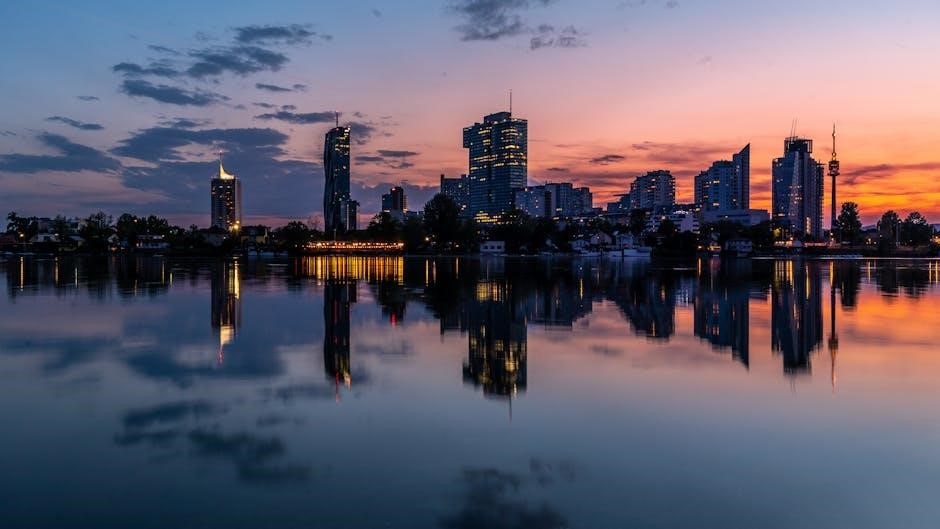
Historical Landmarks and Attractions
Vienna boasts iconic landmarks like Schönbrunn Palace, St. Stephen’s Cathedral, and Hofburg Palace, offering a glimpse into its imperial past and architectural brilliance. These attractions captivate history enthusiasts and travelers alike with their grandeur and cultural significance, blending Baroque, Gothic, and Renaissance styles in a unique way.
2.1. Schönbrunn Palace and Gardens
Schönbrunn Palace, a former imperial summer residence, is one of Vienna’s most iconic attractions. With over 1,400 rooms, this UNESCO World Heritage Site showcases Baroque architecture and opulent interiors. The palace gardens, sprawling over 160 hectares, feature the Orangery, Palm House, and the Great Parterre. Visitors can explore the gardens, enjoy panoramic views from the Gloriette, or stroll through the botanical gardens. The Schönbrunn Zoo, the oldest in the world, is also located within the grounds, offering a unique blend of history, nature, and family-friendly activities, making Schönbrunn a must-visit destination in Vienna.
2.2. St. Stephen’s Cathedral (Stephansdom)
St. Stephen’s Cathedral, or Stephansdom, is Vienna’s spiritual heart and a masterpiece of Gothic architecture. Completed in 1433, it features intricate stone carvings, stunning stained-glass windows, and the iconic South Tower, which offers breathtaking city views. The cathedral houses the Imperial Crown and the Wiener Neustadt Altar. Its vibrant tile roof and towering spire symbolize the city’s rich history and faith. Visitors can explore the catacombs or attend a mass, making it a profound cultural and religious experience in Vienna’s historic center.
2.3. Hofburg Palace and Imperial Apartments
Hofburg Palace, the former principal imperial palace of the Habsburg dynasty, is a testament to Vienna’s rich history. For nearly 600 years, it served as the center of the Austro-Hungarian Empire. The palace complex includes the Imperial Apartments, where Emperor Franz Joseph and Empress Elisabeth once resided. Visitors can explore opulent staterooms, ornate chandeliers, and lavish decor. The Chapel of the Palace and the Treasury, housing the Crown Jewels, are must-sees. The palace also features the Spanish Riding School and the Silver Museum, offering insights into royal life and traditions. Its grandeur and historical significance make it a cornerstone of Vienna’s cultural heritage.

Cultural and Artistic Highlights
Vienna’s cultural landscape is a blend of world-class museums, like the Belvedere and Albertina, showcasing renowned art collections, and a vibrant music scene rooted in classical traditions, reflecting its historic charm.
3.1. The Belvedere Museum and Art Collection
The Belvedere Museum is a stunning Baroque complex showcasing an extensive art collection. It features masterpieces by Gustav Klimt, including “The Kiss,” and works by Egon Schiele, Oskar Kokoschka, and Ferdinand Waldmüller. The museum’s gardens are equally impressive, offering serene landscapes and panoramic views of Vienna. Visitors can explore the grand Upper Belvedere and the charming Lower Belvedere, both reflecting Austria’s rich cultural and artistic heritage. This museum is a must-visit for art enthusiasts, providing insights into Austria’s contribution to European art history.
3.2. Vienna State Opera (Staatsoper)
The Vienna State Opera is one of the world’s most renowned opera houses, offering a rich cultural experience. It hosts over 350 performances annually, featuring operas and ballets by Mozart, Strauss, and other composers. Guided tours provide a glimpse into its opulent interiors, including the grand staircase and the red-and-gold auditorium. Visitors can also attend a performance, immersing themselves in Vienna’s musical heritage; The opera house is a testament to the city’s status as a hub of classical music and artistic excellence.
3.3. Albertina Museum and Graphic Art Collection
The Albertina Museum, located in Vienna’s historic center, is home to one of the world’s largest and most significant collections of graphic art. With over 130,000 works, it showcases masterpieces by artists like Albrecht Dürer, Rembrandt, and Michelangelo. The museum also hosts temporary exhibitions, offering a diverse range of artistic styles and periods. Visitors can explore the opulent Habsburg State Rooms, which provide a glimpse into the former imperial residence. The Albertina is a must-visit for art enthusiasts, blending historical grandeur with contemporary artistic innovation.
Culinary Guide to Vienna
Vienna’s culinary scene is renowned for its rich pastries, like Sachertorte and Apfelstrudel, and traditional coffeehouses. The city offers a blend of flavors, from hearty dishes to fine wines.
4.1. Traditional Viennese Cuisine: Must-Try Dishes
Viennese cuisine is a delightful reflection of Austria’s rich heritage. Must-try dishes include Wiener Schnitzel, a breaded veal cutlet, and Tafelspitz, a boiled beef dish served with apple horseradish. Sachertorte, a chocolate cake with apricot jam, and Apfelstrudel, a warm apple pastry, are iconic desserts. Hearty stews like Goulash and G’schnitte (roast meat) are also favorites. Pair these with a glass of Grüner Veltliner wine or a traditional Viennese coffee for the full experience. The city’s culinary scene offers a mix of comfort and elegance, making it a food lover’s paradise.
4.2. Vienna’s Famous Coffee Culture and Cafés
Vienna’s coffee culture is a cherished tradition, with historic cafés serving as gathering spots for locals and visitors alike. Iconic establishments like Café Central and Demel offer an opulent atmosphere, complete with marble tables and chandeliers. The Viennese coffee experience often includes a “Wiener Melange,” a whipped cream-topped coffee, paired with pastries such as Sachertorte or Apfelstrudel. These cafés are more than just places to drink coffee—they are cultural institutions where time stands still, inviting relaxation, conversation, and the enjoyment of live classical music.
4.3. Best Bakeries for Sachertorte and Apfelstrudel
Vienna’s legendary bakeries are a haven for dessert lovers, offering iconic treats like Sachertorte and Apfelstrudel. Café Sacher Wien is renowned for its original Sachertorte, a rich chocolate cake with apricot jam. Demel, another historic bakery, serves a slightly different yet equally divine version. For Apfelstrudel, Café Central and Konditorei Sluka are top choices, offering flaky, buttery pastry filled with tender apples and spices. These traditional bakeries provide a taste of Vienna’s culinary heritage, perfect for indulging in classic Austrian desserts.
Day Trips from Vienna
Explore the Danube River, visit Melk Abbey, or discover Bratislava, offering a mix of history, culture, and scenic beauty just beyond Vienna’s borders.
5.1. Wachau Valley and Danube River
The Wachau Valley, a UNESCO World Heritage Site, offers breathtaking landscapes along the Danube River. Renowned for its vineyards, medieval castles, and charming villages, it’s a perfect day-trip escape from Vienna. Visitors can enjoy scenic boat cruises, explore historic sites like Melk Abbey, or hike through picturesque trails. The region’s rich history and natural beauty make it a must-visit destination. Don’t miss Dürnstein Castle and the stunning views of the Danube Bend. A trip here combines culture, nature, and relaxation, making it an unforgettable experience for travelers.
5.2. Bratislava, Slovakia: A Nearby Capital City
Bratislava, the charming capital of Slovakia, is a short journey from Vienna, making it an ideal day-trip destination. The city’s historic Old Town features cobblestone streets, colorful buildings, and landmarks like Bratislava Castle and St. Martin’s Cathedral. Visitors can explore the Main Square, adorned with the iconic Roland Fountain, and enjoy the city’s vibrant atmosphere. Bratislava offers a unique blend of Gothic, Renaissance, and Baroque architecture, along with a rich cultural scene. Its compact size makes it easy to discover hidden gems, while its proximity to Vienna ensures a seamless and memorable adventure across the Danube River.
5.3. Melk Abbey and the Danube Region
Melk Abbey, a stunning Benedictine abbey perched above the Danube River, is a UNESCO World Heritage Site. Its Baroque architecture, vibrant frescoes, and extensive library make it a must-visit. The surrounding Wachau Valley offers breathtaking landscapes, charming villages, and vineyards. Visitors can explore the abbey’s grand halls, enjoy panoramic river views, or take a boat cruise along the Danube. This region blends history, culture, and natural beauty, providing a perfect escape from Vienna while immersing travelers in Austria’s rich heritage and scenic splendor.

Shopping and Markets in Vienna
Vienna offers a rich shopping experience, blending high-end boutiques, traditional markets, and artisanal shops. From luxury goods on the Graben to vintage finds at flea markets, there’s something for everyone.
6.1. Naschmarkt: Vienna’s Largest Market
Naschmarkt, Vienna’s most extensive market, offers a vibrant array of food, crafts, and souvenirs. From fresh produce to international delicacies, it’s a sensory delight for locals and tourists alike, showcasing Vienna’s culinary diversity and cultural richness.
6.2. Luxury Shopping on the Graben and Kohlmarkt
Graben and Kohlmarkt are the epicenter of luxury shopping in Vienna, offering high-end boutiques and designer flagships. These historic streets, lined with elegant architecture, feature iconic brands like Cartier and Tiffany & Co. Shoppers can indulge in bespoke jewelry, couture fashion, and exclusive lifestyle products. The area’s refined ambiance and world-class service make it a haven for discerning travelers. Stroll through these pedestrian-friendly streets to experience Vienna’s opulent retail scene and discover local artisans alongside international luxury brands, creating a shopping experience that reflects the city’s timeless sophistication.
6.3. Flea Markets and Vintage Shopping
Vienna’s flea markets and vintage shops offer a treasure trove of unique finds. The Naschmarkt, Vienna’s largest market, features a vintage section with antique jewelry, vintage clothing, and rare collectibles. The Flohmarkt at Naschmarkt is a hotspot for second-hand treasures, attracting both locals and tourists. Bargaining is encouraged, adding to the market’s lively atmosphere. For a more curated experience, boutiques like Vintage Corner and Das Möbel offer high-quality, restored furniture and fashion. These spots provide an authentic way to explore Vienna’s past while discovering one-of-a-kind souvenirs, blending history and modern style seamlessly.
Outdoor Activities and Parks
Vienna’s outdoor activities offer a blend of nature and history. Prater Park features the iconic Giant Ferris Wheel, while Volksgarten and Danube Canal provide serene spots for walking, cycling, and picnics.
7.1. Prater Park and the Giant Ferris Wheel
Prater Park, one of Vienna’s largest public spaces, offers a mix of natural beauty and recreational activities. The park is home to the famous Giant Ferris Wheel, known as the Riesenrad, which provides stunning views of the city. Visitors can enjoy picnics, cycling, and walking through lush greenery. The park also features various attractions, including an amusement park with rides and games, making it a popular destination for both locals and tourists seeking entertainment and relaxation.
7.2. Volksgarten and Other Imperial Gardens
Volksgarten, part of the Schönbrunn Palace and Gardens complex, is a UNESCO World Heritage Site; This imperial garden features meticulously manicured flowerbeds, fountains, and walking paths. Visitors can explore the Great Parterre, a symmetrical garden with vibrant floral arrangements, or relax in the more natural Meadow Garden. The garden also houses statues and memorials, such as the Emperor Franz Joseph memorial. It offers a serene escape from the city, perfect for strolling or picnicking, while showcasing Austria’s rich horticultural heritage and imperial history.
7.3. Cycling Along the Danube Canal
Cycling along the Danube Canal is a popular activity in Vienna, offering a unique perspective on the city’s scenic landscapes. The canal, a renovated waterway, features a well-paved cycling path perfect for both leisurely rides and energetic workouts. Riders can enjoy views of historic bridges, modern street art, and lush greenery. The route is ideal for all skill levels, with plenty of stops for refreshments at charming cafes or restaurants. It’s a great way to explore Vienna’s urban environment while soaking in its natural beauty and vibrant culture.
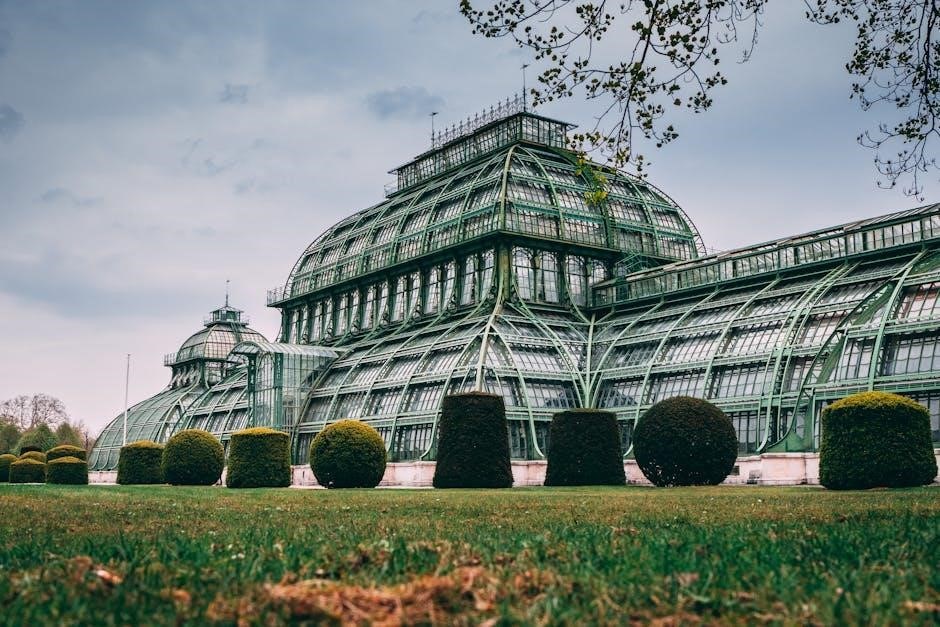
Festivals and Events in Vienna
Vienna hosts vibrant festivals throughout the year, showcasing its cultural richness. From the Vienna Film Festival to music celebrations, these events attract both locals and tourists alike.
8.1. Vienna Ball Season: A Guide to Attending
Vienna’s Ball Season, typically from November to February, is a magical time for grand balls and festive gatherings. With over 450 balls annually, the city transforms into a dance floor, blending tradition and elegance. From the opulent Opera Ball to the lively Hunter’s Ball, there’s something for every taste. To attend, choose a ball that suits your style, ensuring to secure tickets in advance. Dress code is formal, with men often in tails and women in gowns. Dancing skills are a plus, though many venues offer waltz lessons. The atmosphere is electric, with orchestras playing classical compositions, and guests sipping champagne. Arrive early to soak in the pre-ball festivities. Don’t miss this quintessential Viennese experience!
8.2. Vienna Christmas Markets: Locations and Tips
Vienna’s Christmas markets are a winter wonderland, offering festive treats, handmade crafts, and a magical atmosphere. The most famous is the Vienna Christmas Market in front of City Hall, featuring over 150 stalls. Other popular markets include the Belvedere Palace Market and the Spittelberg Christmas Market. Visitors can enjoy glühwein, gingerbread, and Austrian delicacies. Tips include arriving early to avoid crowds and using cash for purchases. Don’t miss the unique souvenirs and local artisanal goods. These markets typically run from mid-November to December 26th, creating an unforgettable holiday experience.
8.3. Vienna Film Festival and Cultural Events
Vienna hosts the renowned Vienna Film Festival (Viennale), showcasing arthouse and independent cinema from around the world. Held annually in late October, it attracts filmmakers and cinephiles. The festival highlights Austrian cinema and premieres international films. Beyond the Viennale, Vienna offers a rich cultural calendar, including theater performances, classical concerts, and contemporary art exhibitions. These events reflect Vienna’s vibrant artistic heritage and its role as a cultural hub in Europe. Visitors can immerse themselves in a city where tradition and modernity seamlessly coexist, offering endless opportunities for cultural exploration and inspiration.
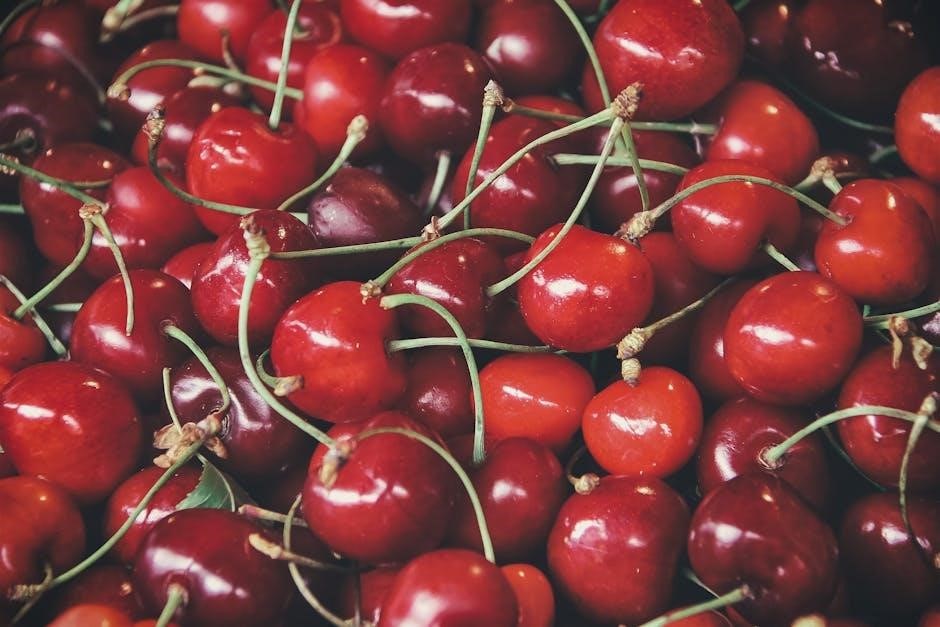
Practical Tips for Visiting Vienna
Vienna offers efficient public transport; consider buying a Vienna City Card for discounts and travel. Respect local customs and enjoy the city’s vibrant culture.
9.1. Best Time to Visit Vienna
Vienna is a year-round destination, but the best time to visit is during spring (April–June) and autumn (September–November). These seasons offer mild temperatures and vibrant cultural events. Summer can be warm, ideal for outdoor activities, while winters are perfect for festive markets and ice skating. Consider visiting during shoulder seasons for smaller crowds and lower prices. Plan according to your preferences and what you want to experience in this beautiful city.
9.2. How to Use Public Transportation in Vienna
Vienna’s public transportation system is efficient and comprehensive, featuring trams, buses, and the U-Bahn (subway). To use it, purchase tickets from ticket machines, tobacconists, or via the Vienna City Card. Validate tickets before boarding. The city operates on a zone system, with most areas in Zone 100. Popular lines include the U1 and U4 for key attractions. Use apps like Citymapper or the ÖBB app for real-time schedules. Consider 24-hour or weekly passes for convenience. Plan ahead to avoid peak hours for a smoother commute.
9.3. Etiquette and Local Customs to Keep in Mind
Vienna is known for its formal culture, so respecting local customs is key. Greet locals with “Grüß Gott” or “Guten Tag,” and use formal titles like “Herr” or “Frau.” In dining, wait for the host to start eating and keep hands visible on the table. Tipping in restaurants is customary (5-10%). Avoid loud conversations in public and prioritize giving up seats to elderly or disabled individuals. Punctuality is highly valued, especially for appointments or social engagements. Respect quiet hours (“Ruhezeit”) in residential areas, typically in the early afternoon and evening.
Vienna captivates with its historical charm, cultural richness, and vibrant modernity. From grand palaces to enchanting music, every experience leaves a lasting impression. Plan your visit and discover why Vienna remains a timeless destination.
10.1. Final Thoughts on Exploring Vienna
Vienna, a city where history and modernity seamlessly intertwine, offers an unforgettable experience. From the grandeur of Schönbrunn Palace to the melancholic notes of Mozart, every corner tells a story. The city’s vibrant cultural scene, exquisite cuisine, and welcoming atmosphere make it a must-visit destination. Whether strolling through imperial gardens or sipping coffee in a classic café, Vienna captivates the senses. Plan your journey thoughtfully, embracing both iconic landmarks and hidden gems, to fully appreciate the city’s timeless charm and leave with memories that will last a lifetime.
10.2. Recommended Itineraries for Different Travelers
Vienna offers tailored experiences for every traveler. History enthusiasts can explore Schönbrunn Palace and Hofburg, while art lovers should visit Belvedere and Albertina. Foodies will delight in sampling Sachertorte at traditional cafés and strolling through Naschmarkt. Families can enjoy Prater Park and the Giant Ferris Wheel. For a romantic getaway, couples can wander through Volksgarten or attend a performance at the Vienna State Opera. Each itinerary ensures a unique and unforgettable experience, catering to diverse interests and preferences, making Vienna a destination for all types of travelers.
10.3. Resources for Further Planning and Exploration
For deeper exploration of Vienna, utilize the Vienna Tourist Board’s official website, offering detailed guides and maps. Download travel apps like Citymapper or Vienna Guide for real-time navigation and attraction tips. Check out guidebooks such as Lonely Planet Vienna or Frommer’s Vienna for insider insights. Follow local blogs like Vienna Würstelstand for cultural and culinary highlights. Join travel forums like TripAdvisor or Reddit’s r/Vienna for firsthand experiences. Additionally, explore social media platforms like Instagram for visual inspiration and local recommendations, ensuring a well-rounded and enriching trip.


